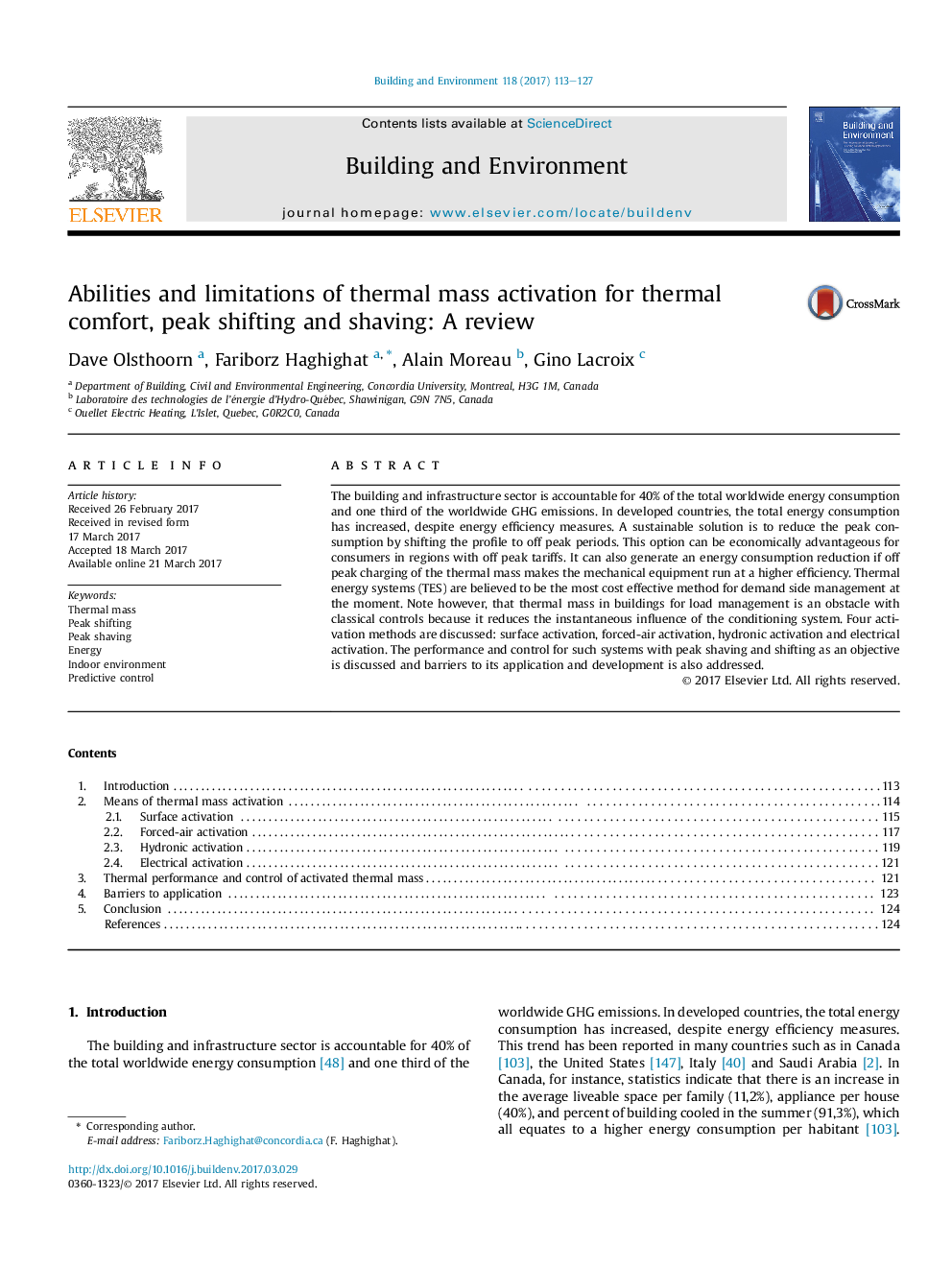| کد مقاله | کد نشریه | سال انتشار | مقاله انگلیسی | نسخه تمام متن |
|---|---|---|---|---|
| 6479246 | 1428374 | 2017 | 15 صفحه PDF | دانلود رایگان |
- TMA is a cost effective method for demand management.
- Adding thermal mass for non-structural purposes is not sustainable from a LCA view.
- There is a lack of set pre-defined design rules for peak shaving applications with TM.
- Considerable literature is available for surface, forced-air and hydronic activation.
- Potential of MPC and optimal controllers is dependent on accuracy of weather forecasts.
The building and infrastructure sector is accountable for 40% of the total worldwide energy consumption and one third of the worldwide GHG emissions. In developed countries, the total energy consumption has increased, despite energy efficiency measures. A sustainable solution is to reduce the peak consumption by shifting the profile to off peak periods. This option can be economically advantageous for consumers in regions with off peak tariffs. It can also generate an energy consumption reduction if off peak charging of the thermal mass makes the mechanical equipment run at a higher efficiency. Thermal energy systems (TES) are believed to be the most cost effective method for demand side management at the moment. Note however, that thermal mass in buildings for load management is an obstacle with classical controls because it reduces the instantaneous influence of the conditioning system. Four activation methods are discussed: surface activation, forced-air activation, hydronic activation and electrical activation. The performance and control for such systems with peak shaving and shifting as an objective is discussed and barriers to its application and development is also addressed.
Journal: Building and Environment - Volume 118, June 2017, Pages 113-127
